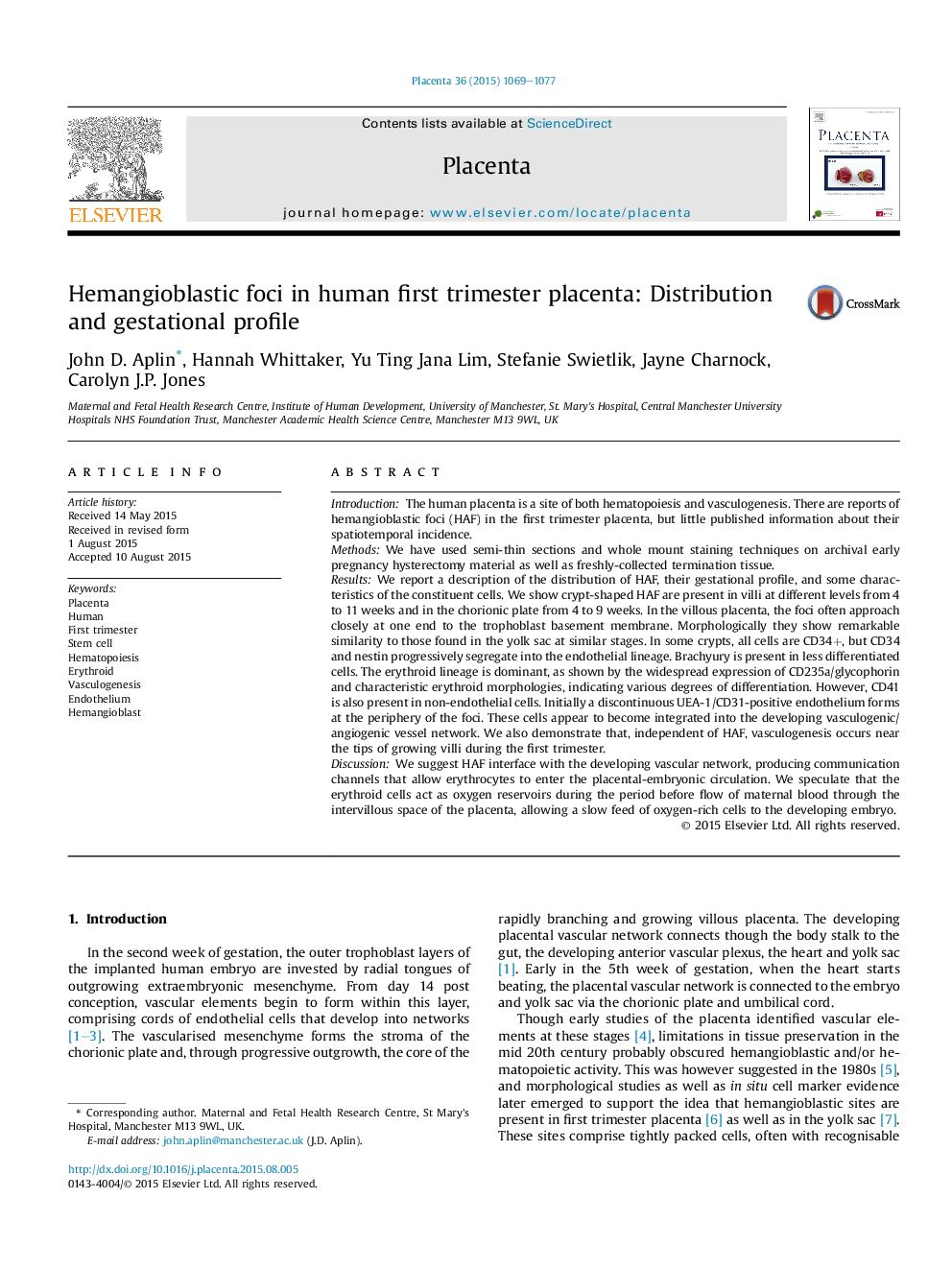| کد مقاله | کد نشریه | سال انتشار | مقاله انگلیسی | نسخه تمام متن |
|---|---|---|---|---|
| 2788470 | 1154437 | 2015 | 9 صفحه PDF | دانلود رایگان |

• Hematopoiesis occurs in the early human placenta.
• Hemangioblastic foci (HAF) were distributed randomly through placental villi and the chorionic plate up to 9–10 weeks.
• These are mainly sites of erythropoiesis, surrounded by a progressively developing endothelium.
• We propose that O2-loaded red cells are released gradually from these sites as circulation spreads via the chorionic plate into distal villi.
• Vasculogenesis continues at growing villous tips, unrelated to HAF, suggesting two distinct endothelial lineages.
IntroductionThe human placenta is a site of both hematopoiesis and vasculogenesis. There are reports of hemangioblastic foci (HAF) in the first trimester placenta, but little published information about their spatiotemporal incidence.MethodsWe have used semi-thin sections and whole mount staining techniques on archival early pregnancy hysterectomy material as well as freshly-collected termination tissue.ResultsWe report a description of the distribution of HAF, their gestational profile, and some characteristics of the constituent cells. We show crypt-shaped HAF are present in villi at different levels from 4 to 11 weeks and in the chorionic plate from 4 to 9 weeks. In the villous placenta, the foci often approach closely at one end to the trophoblast basement membrane. Morphologically they show remarkable similarity to those found in the yolk sac at similar stages. In some crypts, all cells are CD34+, but CD34 and nestin progressively segregate into the endothelial lineage. Brachyury is present in less differentiated cells. The erythroid lineage is dominant, as shown by the widespread expression of CD235a/glycophorin and characteristic erythroid morphologies, indicating various degrees of differentiation. However, CD41 is also present in non-endothelial cells. Initially a discontinuous UEA-1/CD31-positive endothelium forms at the periphery of the foci. These cells appear to become integrated into the developing vasculogenic/angiogenic vessel network. We also demonstrate that, independent of HAF, vasculogenesis occurs near the tips of growing villi during the first trimester.DiscussionWe suggest HAF interface with the developing vascular network, producing communication channels that allow erythrocytes to enter the placental-embryonic circulation. We speculate that the erythroid cells act as oxygen reservoirs during the period before flow of maternal blood through the intervillous space of the placenta, allowing a slow feed of oxygen-rich cells to the developing embryo.
Figure optionsDownload high-quality image (255 K)Download as PowerPoint slide
Journal: Placenta - Volume 36, Issue 10, October 2015, Pages 1069–1077